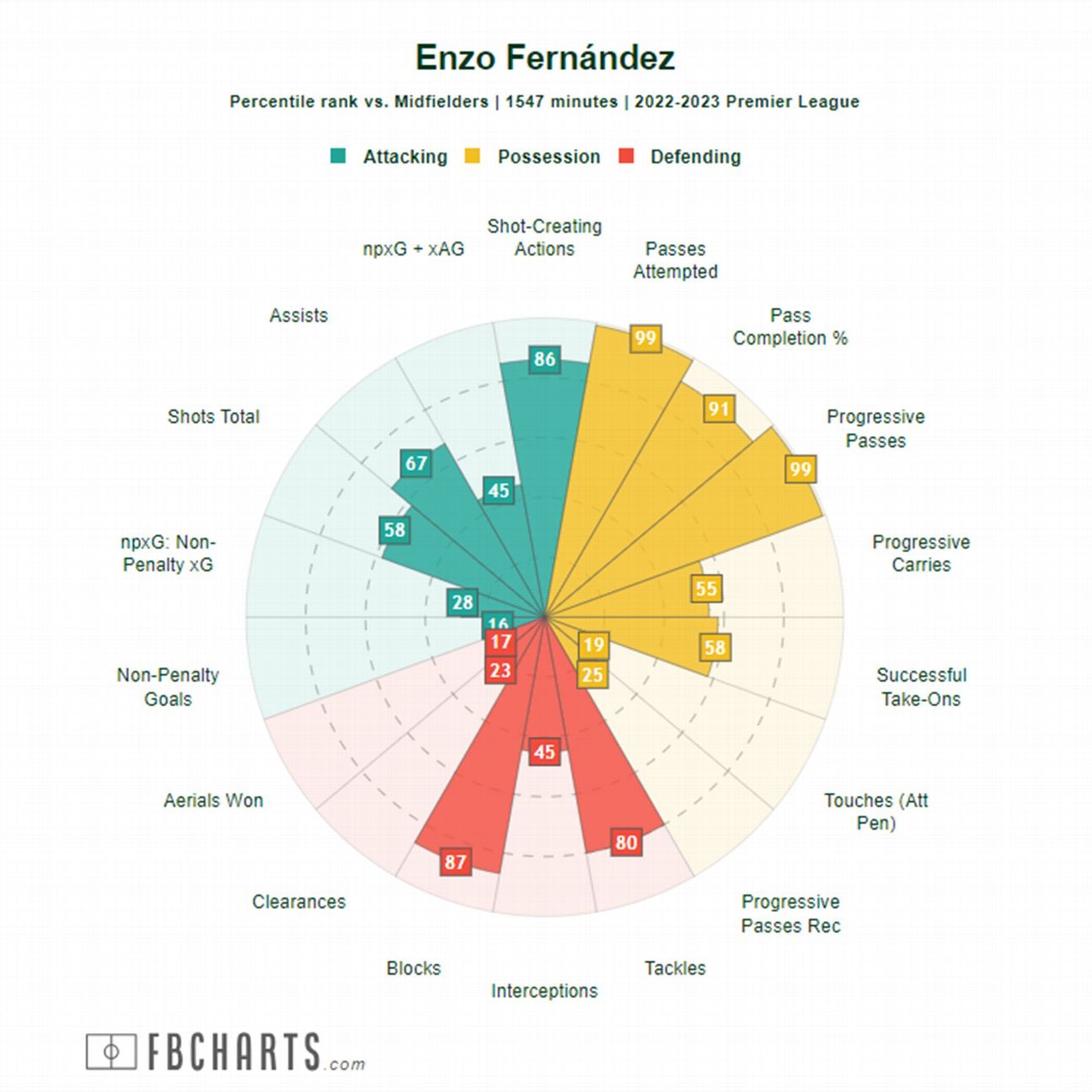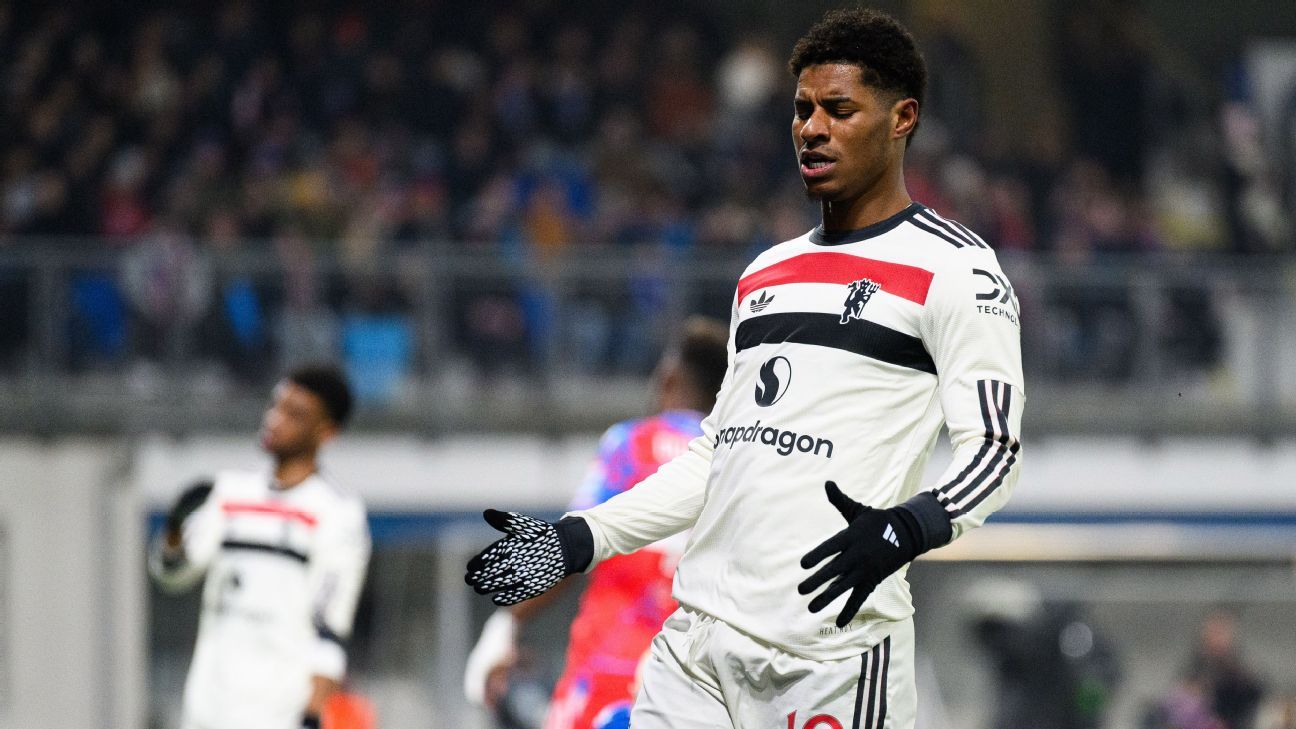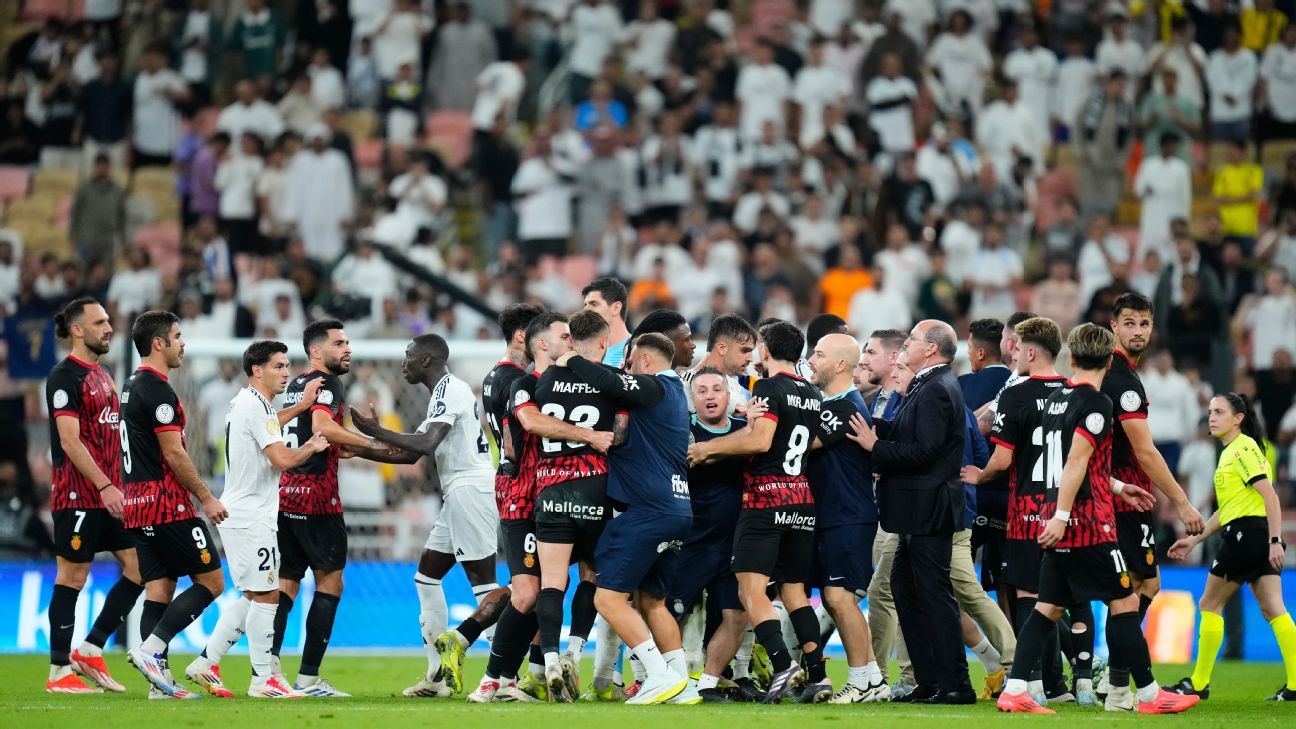Sam Tighe
Jun 3, 2024, 04:06 PM
On paper, it looked like a dream combination: Enzo Fernández and Moisés Caicedo, two young dynamos with complementing skill sets, were signed by Chelsea to solidify the centre of the club's midfield for the next decade.
It took an eye-popping £205 million ($278m) to assemble (Fernández, £105.8m from Benfica; Caicedo, a £100m fee up front with £15m in add-ons from Brighton), but that's the cost of doing business for a World Cup winner and one of the most highly touted prospects in the Premier League.
- Stream on ESPN+: LaLiga, Bundesliga, more (U.S.)
Both signed contracts covering over eight years, giving them ample time to prove worth the outlay (and spreading the huge transfer fee over that timeframe too). But already, the Blues have run into a big problem -- and, no, it's not the fact that they're now on their fifth manager in two years, despite pledging stability as a cultural value. The issue is that when Fernández was ruled out with an injury for the final stretch of the Premier League campaign, Chelsea got better. Much better.
An absence that should have been terminal led to the team thriving; they won all five of their final fixtures and finished sixth, sneaking into the UEFA Europa Conference League in the process. And, despite not having his nine-figure partner alongside him, Caicedo looked more impressive than ever.
So, why did this happen? And how is new manager Enzo Maresca going to fix this issue?
The issue
Fernández was ruled out with "pubalgia," which is effectively a sports hernia. He'd been managing it for a while, likely playing through pain, and that will have been a contributing factor to some of his below-par performances. So, naturally, getting a fully fit central midfielder onto the pitch instead of him will have played a part in Chelsea's improvement in form, but it can't account for the scale of it.
The first game Fernández missed in 2024 was the 6-0 victory over Everton on April 15 -- the night four-goal hero Cole Palmer ran riot, Everton goalkeeper Jordan Pickford lost his head, and academy product Alfie Gilchrist scored the most heartwarming goal of the season.
He then came back into the team for the next game, which Chelsea lost 5-0 to Arsenal. It was a rough night for all, but the Argentina international was particularly off-colour and was withdrawn after 67 minutes -- it was the last we'd see of him this season.
What followed, both results- and performance-wise, was stunning: A 2-2 draw at Aston Villa on April 27, which probably should have been a win, then five straight victories in which 14 goals were scored and four were conceded. Suddenly Chelsea were humming, with players such as Marc Cucurella, Conor Gallagher and, crucially, Caicedo, hitting top form.
But to not miss Fernández at all was hugely surprising.
The reason
After a single win in the first six league games, Chelsea started poorly and midway through the season they sat a disappointing 10th in the table. But by the start of 2024, former manager Mauricio Pochettino had settled on a 4-2-3-1 shape that partnered Fernández and Caicedo at the base of midfield, then deployed Gallagher ahead of them in a pressing No. 10 role. The Blues made themselves more difficult to beat, and didn't lose much, but still failed to win more than 50% of their games until Fernández's absence.
After that, Pochettino made two critical changes that reshaped the team: Gallagher dropped into the midfield pairing alongside Caicedo, then the latter was given licence to push forward and recover the ball, rather than the former. When Caicedo charged up the pitch, left-back Cucurella inverted into midfield and sat next to Gallagher, filling the space created.
It didn't just work, it absolutely dominated.
The performance against Villa really grabbed people's attention and, on that night in particular, Caicedo was peerless. He had five tackles, four of which came in the attacking third; he single-handedly penned Villa into their own third, stopped them from breaking out, and created such continuous pressure that the hosts wilted.
Caicedo in full flow looked like the sort of game-changing midfielder you pay £100m to sign.
The Ecuador international continued this rampage for the rest of the season, racking up tackles and interceptions at will: six against Tottenham, four against Forest, nine against AFC Bournemouth. He was let loose all over the pitch, with Gallagher and Cucurella playing smart positional football to cover his newly aggressive game.
Comparing Caicedo's numbers for match weeks 1-32 (largely with Fernández) and 33-38 (largely without) paints a stark picture. There's a pretty sizable uptick in the metrics he thrives in: recovering the ball in any way possible.
On top of this, misfiring striker Nicolas Jackson also found form in front of goal, Noni Madueke settled into life on Chelsea's right wing, and even Mykhailo Mudryk (who has yet to fully deliver on his £80m outlay) perked up on the opposite flank. The team clicked and it was in no small part thanks to a central midfield that washed over teams like a roaring tide.
All this occurred without the £105.8m Fernández, but that clearly can't continue. So how do they play with him?
The solution
The beauty of the summer break is that it gives clubs a chance to freshen things up. In Chelsea's case, that means bringing in a new manager with a different style and framework.
Given the Blues' form towards the end the season, it's debatable whether turning over a new leaf is wise, but perhaps this troubling Caicedo/Fernández incompatibility was front and centre of the ownership group's minds when making the call to let Pochettino go.
What's interesting about hiring Maresca is the way the Italian configured his midfield at Leicester City last season, en route to topping the Championship and winning promotion: A 4-2-3-1 / 4-3-3 shape off the ball quickly became a 3-2-4-1 shape on it, similar to Manchester City's under Pep Guardiola when John Stones pushed into midfield regularly.
Maresca's system was slightly different, pushing a full-back (usually Ricardo Pereira) into midfield alongside Harry Winks, who clocked up plenty of passes (87.7 per game) with a 94% success rate. Ahead of him, Wilfred Ndidi -- long regarded as an anchor midfielder -- was released as a box-to-box threat, allowing him to combine defensive grit (2.0 combined tackles and interceptions per game) with attacking contributions (four goals and five assists from 26 starts.)
"Kudos to the manager because he's trying to help me understand the role," Ndidi told the club website of his new role under Maresca last September. "It's a process. It's going well, but I'll keep going. It's very interesting because I try to get in the box more often. I've always had it but it's taken Enzo to make me know I've actually got it. He's trying to push me."
Winks revealed in February that his role in the team was "to be that link between the defence and the attack. It's all about building through the lines and controlling the game." And, on the subject of his passing numbers, he admitted: "To get those stats, for me personally, it's great to have as it's like a goal and assist. I know that's my job done."
Transposing this same system to Chelsea is easy enough on paper: Fernández sits in midfield and sees plenty of the ball; Caicedo charges up and down the pitch, remaining free to affect the game higher up; and either Cucurella, Reece James or Malo Gusto move inside from full-back to balance the midfield.

For Fernández, it would be a return to the role he played during the opening stages of his Chelsea career under Graham Potter. As the graph above shows, positioned just in front of the defence in a relatively static role, he sent progressive passes flying everywhere, ranking in the 99th percentile among Premier League players in this metric. He saw loads of the ball and did plenty with it -- although at times looked a bit frustrated that he couldn't break forward into the box.
That role would be left to Caicedo, who has spent the last six weeks doing it with aplomb, and may even find himself even further forward if he plays Ndidi's role (alarmingly for a defensive midfielder, the Nigeria international often found himself hitting the opponent's byline where he could cut balls back into the box.)
There's no guarantee Maresca utilises the exact same system at Stamford Bridge, but if he does, it could redefine and potentially get the best out of Chelsea's £205m pairing. Maresca has plenty to sort out once he takes up his post at Stamford Bridge, but ensuring Fernández and Caicedo are in unison should be at the top of his to-do list.
 (1).png)
 7 months ago
21
7 months ago
21















